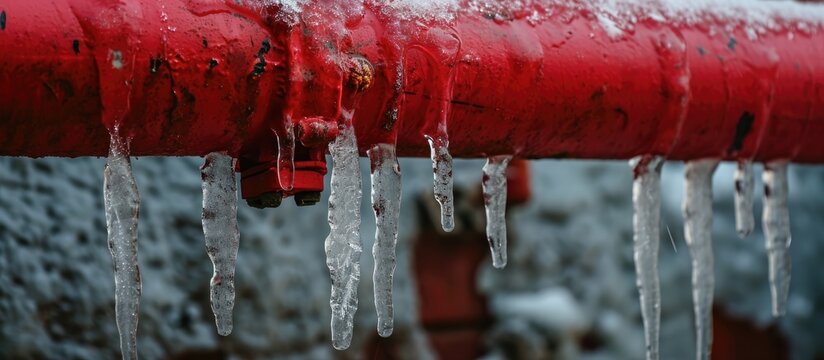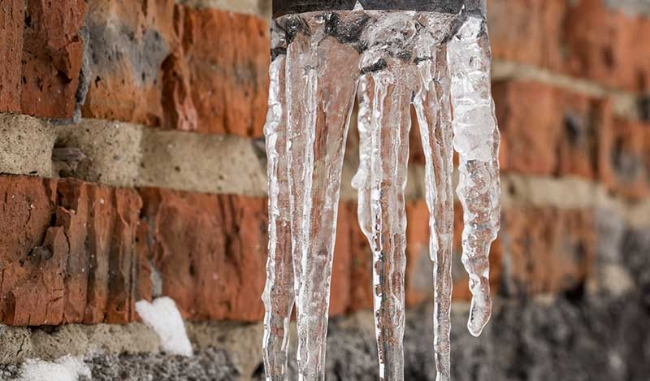We have unearthed this great article about Winter Plumbing Precautions: Preventing Frozen Pipes below on the web and think it made perfect sense to discuss it with you over here.

Winter can wreak havoc on your pipes, particularly by freezing pipes. Right here's just how to avoid it from happening and what to do if it does.
Intro
As temperature levels decrease, the threat of icy pipes increases, possibly bring about expensive repairs and water damage. Understanding how to stop frozen pipelines is critical for property owners in cool environments.
Understanding Icy Pipelines
What causes pipes to freeze?
Pipelines ice up when subjected to temperature levels listed below 32 ° F (0 ° C) for expanded durations. As water inside the pipelines ices up, it broadens, taxing the pipe walls and possibly causing them to burst.
Risks and damages
Icy pipes can lead to water system disturbances, home damage, and expensive repairs. Ruptured pipelines can flood homes and trigger comprehensive structural damage.
Signs of Frozen Pipes
Identifying frozen pipes early can stop them from rupturing.
How to recognize frozen pipelines
Search for lowered water flow from faucets, uncommon odors or sounds from pipelines, and visible frost on exposed pipes.
Avoidance Tips
Shielding vulnerable pipes
Cover pipelines in insulation sleeves or make use of heat tape to safeguard them from freezing temperature levels. Concentrate on pipes in unheated or exterior areas of the home.
Heating techniques
Keep interior areas properly heated, particularly areas with plumbing. Open closet doors to permit cozy air to distribute around pipes under sinks.
Safeguarding Exterior Pipes
Garden hose pipes and outdoor taps
Detach and drain yard pipes before winter. Install frost-proof spigots or cover outside faucets with protected caps.
What to Do If Your Pipes Freeze
Immediate activities to take
If you believe icy pipelines, maintain taps open up to alleviate pressure as the ice thaws. Make use of a hairdryer or towels soaked in warm water to thaw pipes slowly.
Long-Term Solutions
Architectural modifications
Take into consideration rerouting pipes far from outside walls or unheated areas. Include additional insulation to attics, basements, and crawl spaces.
Updating insulation
Invest in high-quality insulation for pipelines, attics, and wall surfaces. Appropriate insulation aids preserve consistent temperature levels and reduces the risk of icy pipelines.
Verdict
Protecting against frozen pipelines requires aggressive procedures and quick reactions. By understanding the causes, signs, and safety nets, property owners can shield their plumbing throughout winter.
5 Ways to Prevent Frozen Pipes
Drain Outdoor Faucets and Disconnect Hoses
First, close the shut-off valve that controls the flow of water in the pipe to your outdoor faucet. Then, head outside to disconnect and drain your hose and open the outdoor faucet to allow the water to completely drain out of the line. Turn off the faucet when done. Finally, head back to the shut-off valve and drain the remaining water inside the pipe into a bucket or container. Additionally, if you have a home irrigation system, you should consider hiring an expert to clear the system of water each year.
Insulate Pipes
One of the best and most cost-effective methods for preventing frozen water pipes is to wrap your pipes with insulation. This is especially important for areas in your home that aren’t exposed to heat, such as an attic. We suggest using foam sleeves, which can typically be found at your local hardware store.
Keep Heat Running at 65
Your pipes are located inside your walls, and the temperature there is much colder than the rest of the house. To prevent your pipes from freezing, The Insurance Information Institute suggests that you keep your home heated to at least 65 degrees, even when traveling. You may want to invest in smart devices that can keep an eye on the temperature in your home while you’re away.
Leave Water Dripping
Moving water — even a small trickle — can prevent ice from forming inside your pipes. When freezing temps are imminent, start a drip of water from all faucets that serve exposed pipes. Leaving a few faucets running will also help relieve pressure inside the pipes and help prevent a rupture if the water inside freezes.
Open Cupboard Doors
Warm your kitchen and bathroom pipes by opening cupboards and vanities. You should also leave your interior doors ajar to help warm air circulate evenly throughout your home.

We are very interested by How To Avoid Freezing Pipes and I really hope you enjoyed the blog entry. Those who liked our blog posting plz don't forget to pass it around. I recognize the value of reading our article about How To Avoid Freezing Pipes.
Call Today